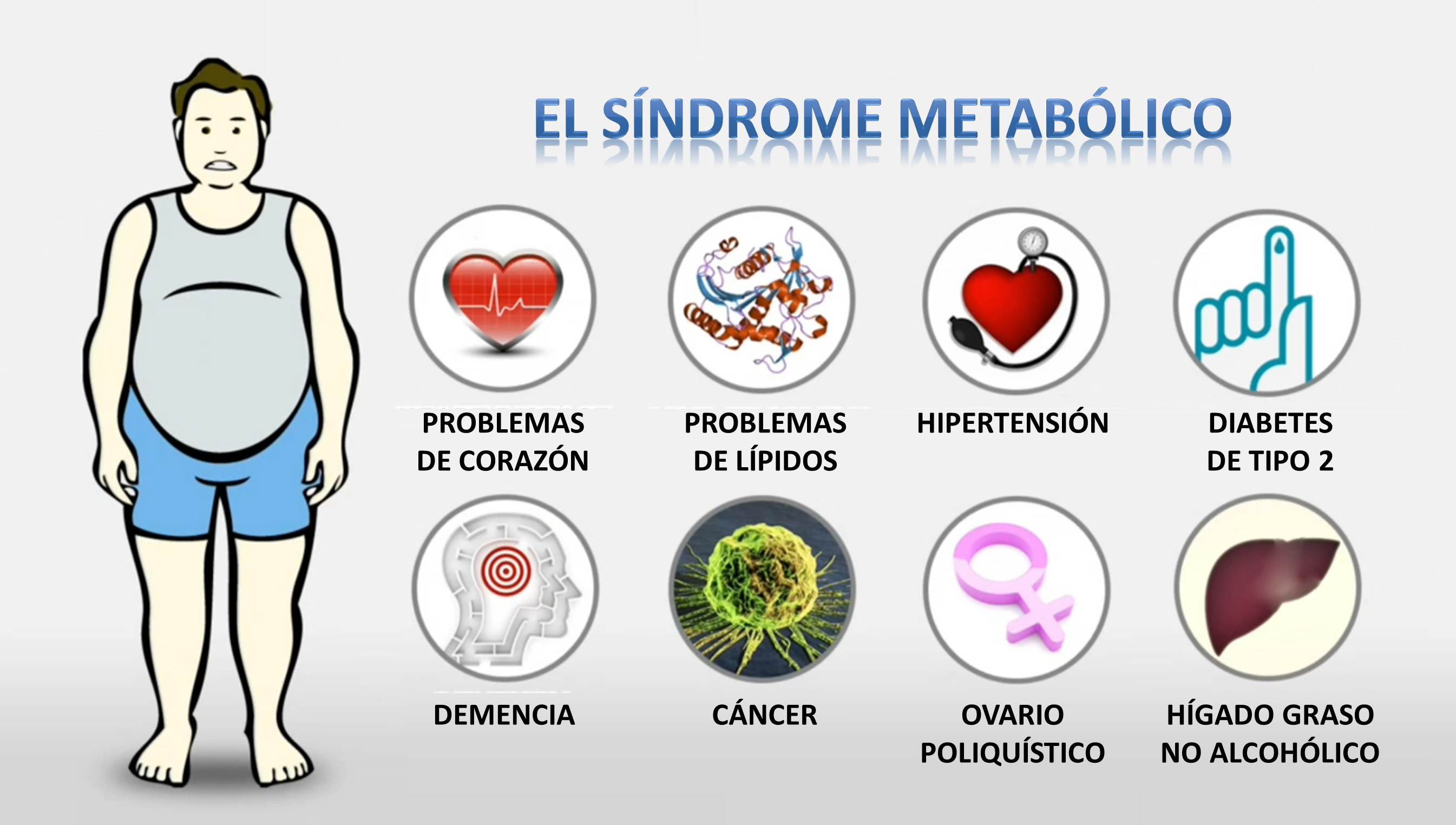Síndrome metabólico en adultos mayores de 40 años en 2 consultorios médico de familia
Resumen
Introducción: el síndrome metabólico (SM), inicialmente descrito por Reaven en 1988, es una asociación de trastornos metabólicos como la dislipidemia, la obesidad, la hipertensión arterial y la intolerancia a la glucosa.
Método: se realizó un estudio descriptivo transversal en el que se incluyeron 239 pacientes.
Objetivo: determinar la presencia de síndrome metabólico en los pacientes pertenecientes a dos Consultorios Médicos de Familia del Policlínico Universitario Jimmy Hirtzel, de Bayamo, en el período comprendido desde enero de 2009 hasta noviembre de 2011.
Resultados:se estableció el diagnóstico de Síndrome metabólico según los criterios de la The Third Report National Cholesterol Education Program. Del total de la muestra se diagnosticó síndrome metabólico en 38 pacientes, siendo significativa la asociación entre la edad y el número de componentes del síndrome metabólico, no así el sexo, no obstante a que el mayor número de pacientes con síndrome metabólico perteneció al sexo femenino. Los parámetros mayormente asociados con el diagnóstico fueron la tensión arterial, la hipertrigliceridemia y la obesidad abdominal.
Conclusiones: no se encontró influencia significativa de los hábitos alimentarios y los niveles de actividad física sobre la aparición de síndrome metabólico.
Descargas
Citas
1.Pedrozo W, Castillo Rascón M, Bonneau G, Ibáñez de Pianesi M, Castro Olivera C, Jiménez de Aragón S. Síndrome metabólico y factores de riesgo asociados con el estilo de vida de adolescentes de una ciudad de Argentina, 2005. Rev Panam Salud Pública 2008; 24(3):149–60.
2.Fernández-Bergés D, Consuegra-Sánchez L, Peñafiel J, Cabrera de León A, Vila J, Félix-Redondo FJ, Segura-Fragoso A, Lapetra J, Guembe MJ, Vega T, Fitó M, Elosua R, Díaz O, Marrugat J. Perfil metabólico-inflamatorio en la transición obesidad, síndrome metabólico y diabetes mellitus en población mediterránea. Estudio DARIOS Inflamatorio. Rev Esp Cardiol 2014; 67(8):624–631.
3.Valdés E, Bencosme N. Síndrome metabólico y enfermedad cardiovascular en personas con diabetes mellitus tipo 2. Rev Cubana Endocrinol 2013; 24(2): 125-135.
4.Zimmet P, Alberti G, Shaw JE. Mainstreaming the metabolic syndrome: a definitive definition. Med J Aust 2005; 183: 175-6.
5.Srinivasan SR, Myers L, Berenson GS. Predictability of childhood adiposity and insulina for developing insulin resistance syndrome (syndrome X) in young adulthood: the Bogalusa Heart Study. Diabetes 2002; 51(1):204–9.
6.Williams CL, Hayman LL, Daniels SR, Robinson TN, Steinberger J, Paridon S. Cardiovascular health in childhood: a statement for health professionals from the Committee on Atherosclerosis, Hypertension, and Obesity in the Young (AHOY) of the Council on Cardiovascular Disease in Young. American Heart Association. Circulation. 2002; 106(1): 143–60.
7.Steinberger J, Daniels SR. Obesity, insulin resistance, diabetes, and cardiovascular risk in children. An American Heart Association scientific statement from the Atherosclerosis, Hypertension, and Obesity in the Young Committee (Council on Cardiovascular Disease in the Young) and the Diabetes Committee (Council on Nutrition, Physical Activity and Metabolism). Circulation. 2003; 107(10): 1448–53.
8.Bustillo SE, Pérez FY, Brito GA, González IA, Castañeda MD, Santos González M, Bustillo ME. Síndrome metabólico, un problema de salud no diagnosticado. Rev Cubana de Endocrinol 2011; 22(3): 167-181.
9.Alberti KG, Zimmet P, Shaw J. The metabolic syndrome, a new world wide definition. Lancet 2005; 366: 1059-1062.
10.Expert Panel on Detection, Evaluation, and Treatment of High Blood Cholesterol in Adults. Executive Summary of The Third Report of The National Cholesterol Education Program (NCEP), Expert Panel on Detection, Evaluation, And Treatment of High Blood Cholesterol In Adults (Adult Treatment Panel III). JAMA 2001; 285: 2486-97.
11.Trinder P. Determination of glucose in blood using glucose oxidase with an alternative oxygen acceptor. Ann Clin Biochem. 1969; 6: 24.
12.Buccolo G. Quantitative determination of serum triglycerides by use of enzimes. Clin Chem 1973; 19(5): 476-482.
13.Lópes-Virella M, Stone MF, Ellis S. Cholesterol determinations in HDL separated by three different methods. Clin Chem 1977; 23:882-5.
14.Kim JS, Lee HC, Choi BK, Lee HW, Park JS, Lee YH. Impact of metabolic syndrome on instent restenosis and clinical outcomes after percutaneous coronary stent implantation. Diabetes Research and Clinical Practice 2010; 88: 38-41.
15.Mozaffarian D, Kamineni A, Prineas RJ, Siscovick DS. Metabolic syndrome and mortality in older adults: The Cardiovascular Health Study. Arch Intern Med 2008; 168(9): 969-78.
16.Alegría E, Castellano JM, Alegría A. Obesidad, Síndrome Metabólico y Diabetes: implicaciones cardiovasculares y actuación terapéutica. Rev Esp Cardiol 2008; 61(7): 752-64.
17.Calderín Bouza, RO. Síndrome Metabólico VS Síndrome de Insulinorresistencia. Diferentes términos, Clasificaciones y enfoques: ¿Existe o no? Rev Cubana Endocrinol 2006; 17(3): 1-9.
18.D Álvarez-Dongo1 J, Sánchez-Abanto G, Gómez-Guizado C. Tarqui-Mamani. Sobrepeso y obesidad: prevalencia y determinantes sociales del exceso de peso en la población peruana (2009-2010). Rev Peru Med Exp Salud Publica 2012; 29(3): 303-313.
19.Nathan DM. Impaired Fasting Glucose and Impaired Glucose Tolerance. Diab Care 2007; 30(3): 753-9.
20.Bloomgarden ZT. Third Annual World Congress on the Insulin Resistance Syndrome: mediators, antecedents and measurement. Diabetes Care 2006; 29(7):1700-6.
21.Álvarez Gómez J. El Síndrome Metabólico y la actividad física como pilar importante en su tratamiento. Rev Cubana Cardiol Cir Cardiov 2010; 16(1): 51-63.
22. Wiebe JC, Wägner AM, Novoa Mogollón FJ. Genética de la diabetes mellitus. Nefrologia Sup Ext 2011; 2(1):111-9.
23.Bernal JA. Frechtel G. Análisis molecular de la disfunción de la célula β pancreática en la progresión de la diabetes tipo 2. Su aplicación a nuevos Bancos Terapéuticos. [Internet] 2008 [consultado 22 d enero del 2014]. Disponible en: http://www.google.com.cu/url?sa=t&rct=j&q=&esrc=s&source=web&cd=1&ved=0CBwQFjAA&url=http%3A%2F%2Fwww.diabetes.org.ar%2Fdocs%2Fmonografia_bernal_jose.pdf&ei=A8VgVO6dFYSYgwT3t4GYDA&usg=AFQjCNEPbwNdcOgdInCvdZj1TTacrsWtow&bvm=bv.79189006,d.eXY&cad=rja
24.Lam TK, Carpentier A, Lewis GF. Mechanisms of the free fatty acid-induced increase in hepatic glucose production. Am J Physiol Endocrinol Metab 2003; 284: E863-73.
25.Carr MC, Brunzell JD. Abdominal obesity and dyslipidemia in the metabolic syndrome: importance of type 2 diabetes and familial combined hyperlipidemia in coronary artery disease risk. J Clin Endocrinol Metab 2004; 89: 2601-7.
26.Montserrat L, Moreno-Franco B, Andrés-Esteban EM, Ledesma M, Laclaustra M, Alcalde V, Peñalvo JL, Ordová JM, Casasnovas JA. Sedentarismo y su relación con el perfil de riesgo cardiovascular, la resistencia a la insulina y la inflamación. Rev Esp Cardiol 2014; 67(6): 449–455.
27.Pencina JM, D’Agostino BR, Massaro M. Predicting the 30-Year Risk of Cardiovascular Disease The Framingham Heart Study. Circulation 2009; 119: 3078-3084.

Publicado
Cómo citar
Número
Sección
Licencia
Avisos de derechos de autor propuestos por Creative Commons
1. Política propuesta para revistas que ofrecen acceso abierto
Aquellos autores/as que tengan publicaciones con esta revista, aceptan los términos siguientes:- Los autores/as conservarán sus derechos de autor y garantizarán a la revista el derecho de primera publicación de su obra, el cuál estará simultáneamente sujeto a la Licencia de reconocimiento de Creative Commons que permite a terceros compartir la obra siempre que se indique su autor y su primera publicación esta revista.
- Los autores/as podrán adoptar otros acuerdos de licencia no exclusiva de distribución de la versión de la obra publicada (p. ej.: depositarla en un archivo telemático institucional o publicarla en un volumen monográfico) siempre que se indique la publicación inicial en esta revista.
- Se permite y recomienda a los autores/as difundir su obra a través de Internet (p. ej.: en archivos telemáticos institucionales o en su página web) antes y durante el proceso de envío, lo cual puede producir intercambios interesantes y aumentar las citas de la obra publicada. (Véase El efecto del acceso abierto).







